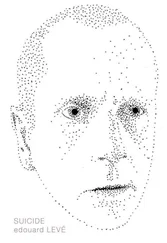This summary of Ibn Sab'in's life journey, as told in this novel, has illustrated the skillful way in which its primary "character" is placed not only into a turbulent temporal context, as noted above, but also into a physical and theological frame of reference that serves to introduce the reader to a highly important and controversial intellectual, the enormous breadth of whose learning and interests was characteristic of his time, and especially of Andalusian culture during several of the seven centuries of the Islamic period in the Iberian Peninsula (eighth to fifteenth centuries CE). Reflecting Ibn Sab'in's own intellectual and spiritual predilections, the text is full of debates and statements, for example on philosophers-Greek and Arab, poets, religious beliefs, and legal practices, and, above all, powerful statements concerning the pursuit of the Sufi path toward the transcendent, the "Necessary Existent," to which he refers throughout the text. Everywhere that Ibn Sabin resides, he is met with, on the one hand, the fervent admiration of those Muslims who believe in the dynamic nature of discussions of phenomena and the placement of religion and sacred texts within that frame of reference, and, on the other, the dogged and often pedantic resistance and outright opposition of religious scholars and jurists with whom the rulers of the time seem to surround themselves. Such is Ibn Sab'in's intellectual ability that he is always able to best these pseudoscholars by pointing out the ways in which they are distorting the meanings of texts (or even the texts themselves). However, as he discovers at every turn, that is of no help when orthodoxy and political power combine to squelch debate. Among the eminent contemporary and subsequent textual sources on the subject of Ibn Sabin cited by Himmich at the conclusion of the narrative, that of Ibn Taymiya, the renowned Damascene scholar of the thirteenth/fourteenth century CE, is of major interest in this context:
Ibn Sabin was a major heterodox figure, a polytheist and magician. He was by far the brightest and cleverest of them all, and the most knowledgeable in matters of philosophy and philosophical Sufism.
Even from Ibn Taymiya, a major conservative figure who advocated a return to the Qur'an and Surma as sole sources of Muslim belief and a purge of other extraneous elements, including many aspects of Sufism, there is a grudging respect for the sheer power of Ibn Sab'in's intellect.
Ibn Sabin lived in a period of profound change in the Islamic world. His journey from Murcia to Mecca is certainly a physical one, but it is also a vivid example of intercultural and intercommunal relationships in the inexorable process of breakdown. Once again, Himmich seems able to make use of the historical novel to revive a period in premodern history in order to confirm George Santayana's well-known quotation that "those who do not know history are condemned to repeat it." Or perhaps, "plus fa change, plus c'est la meme chose"…
In conclusion, a few words concerning the translation. I can begin with the English title, which is not a translation of the original. Behind that choice lies a story. I mentioned at the beginning of this afterword that I have previously translated two of Himmich's other novels. I happened to meet him at a Cairo conference while I was completing my translation of the second, now published as The Polymath. He informed me that he was already well involved in a new novel about the Sufi philosopher Ibn Sabin, and was proposing to call it Al-Intihar bi-jiwar alKa`ba (Suicide Inside the Ka`ba). I suggested to him that, while that was certainly an exciting title (and indeed one that reflected historical accounts of Ibn Sab'in's death), it was also not a little provocative and even controversial in contemporary terms. I do not know what happened in the intervening period before the novel was finally published in 2007, but the eventual title, Hadha al-Andalusi (literally, this Andalusian) seemed to sway perhaps too much in the other direction. At any rate, I can report that it is at the author's specific request that this translation into English reverts to his original ideas concerning the title of this novel. With regard to the text of the novel itself, Ibn Sabin is portrayed, with complete historical accuracy it would appear, as a widely read and intensely devout Muslim with an ongoing interest in philosophy and a permanent quest for the loftier planes of mystical inspiration and communication with the beyond. Sufi discourse in Arabic, with its particular lexicon and elaborate modes of expression, shares many of the qualities of the poetic, not least in its multivalent significances. In this translation, as in my previously published translations of Himmich's other novels, I have followed the balance suggested by the ideas of the German philosopher-theologian Schleiermacher (d. 1834), who expressed a clear preference for a view of the translator's activity as being one of acquainting the reader with the unfamiliar and foreign rather than attempting to adapt or alter the cultural significances of the original text so as to conform to the reader's "horizon of expectations" (to use an expression connected with Reception Theory). At the beginning of this afterword, I talked about Ibn Sab'in's use of "a style that is replete with the complex lexicon of the various spheres of knowledge and research that are involved," not to mention Himmich's craft in imitating it. With that in mind, my translations of Ibn Sab'in's ecstatic utterances (and even his reflections on them) attempt to capture as much of the phraseology and imagery of the original text as possible. The resulting English versions will certainly confront the reader with the unfamiliar (except perhaps those who have read the thoughts and poetry of Hildegard of Bingen, for example, or Julian of Norwich). As is usually the case with Himmich's novels, there is a veritable host of references to places, battles, texts, and authors, and I have provided a glossary to assist those readers, who, like me, see the historical novel as not only a pleasant introduction to the premodern world but also as a reminder of what has been and might yet be.
NOTE: In this glossary we have aimed to assist the general reader by listing the names of prominent scholars as they are presented in the text of the novel. Thus, for example, "AlShushtari" appears below under the name "Abu al-Hasan al-Shushtari." Cross-references are provided to the name(s) by which such figures are more commonly known.
`Abd al-Rahman III (899?-961): The Umawi amir who declared himself caliph in 931 and made Cordoba his capital city. The palace of Al-Zahra' outside the city is a reflection of the heights to which he brought learning and culture during his lengthy reign.
`Abdallah Musa ibn Ishaq ibn Maymun (1135–1204): The renowned Spanish-Jewish scholar (Moshe ben Maimon), known in the West as Maimonides. Rabbi, philosopher, and physician, the turbulence of his times took him from his native Spain, via Morocco, to Egypt. His Guide for the Perplexed is one of the major works on the reconciliation of religious belief and philosophy.
Abu al-'Abbas al-Hamadhani (863–944): A renowned Shi'i scholar on prophetic traditions.
Abu al-'Abbas from Sabta (1129–1204): Moved from his native Sabta to Marrakesh and became highly revered as a Sufi ascetic. Initially residing in a cave outside the city, he later moved to a hostel and madrasa constructed for him by the Almohad ruler Ya`qub al-Mansur.
Abu `Abdallah al-Shawdhi (also known as "Al-Halawi"): A prominent figure in Spanish Sufism from Seville who was most influential in Ibn Sab'in's early development.
Abu Da'ud (817–888): A famous collector of hadith from Khurasan and author of Sunan Abi Da'ud, one of the canonical collections of prophetic hadith.
Читать дальше












